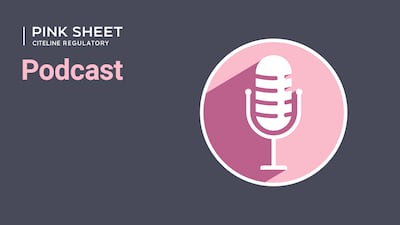ADVERTISEMENT
US FDA Performance Tracker
Advisory committee concerns cast clouds over Iterum’s oral antibiotic, Intercept’s Ocaliva, and perioperative immuno-oncology regimens, while CSL and Pfizer aim to take their hematology franchises in new directions.
Halozyme’s Enhanze technology has now brought seven monoclonal antibodies, including Ocrevus and Tecentriq, from IV to subcutaneous delivery, but Alteogen and other high-concentration formulation players hope to join the party as Medicare pricing issues help drive interest.
New therapies in the wings include two candidates for Niemman-Pick disease type C, a first-in-class antipsychotic, a targeted oncology therapy under Real-Time Oncology Review, and a new drug for gastroparesis.
The US FDA’s regenerative medicine advanced therapy designation is seeing its biggest year yet after a slower ramp-up than the more established breakthrough therapy pathway.
A stacked user fee goal lineup sets the stage for market showdowns in primary biliary cholangitis and IgA nephropathy, the first psychedelic approval decision, and lots of targeted cancer therapies.
Pink Sheet reporter and editors discuss the impact of a US and EU drug approvals analysis that found the US FDA still clears many novel products first, including most new cell and gene therapies and cancer treatments.
Novel agents in immuno-oncology headline the drug center’s upcoming goal dates, while gene therapies make up most of the biologic center’s workload.
So far this year, when the agency has taken action on NMEs that went before advisory committees, the FDA decision has matched the committee vote.
Interactive table from the Pink Sheet breaks down the 40 novel drugs and biologics have user fee goal dates before the new year.
US FDA would need to approve 44 novel agents by year-end to match 2023’s big total, but only 40 candidates are known to have user fee goals in the second half of 2024.
Half of the FDA’s upcoming 2024 user fee goals target rare diseases, but highly prevalent conditions like uncomplicated urinary tract infections and atopic dermatitis are also up for agency action in the second half of the year.
Sun’s deuruxolitinib and Novo Nordisk’s insulin icodec stand out as new molecular entities among the small cluster of US FDA user fee goal dates in July.











